Eco-travel lets you explore the world while protecting it for future generations. You'll minimize your environmental impact by choosing certified eco-lodges, using public transportation, and supporting local communities through your travel choices. Pack sustainably with reusable items, and opt for wildlife experiences that prioritize animal welfare and conservation. When photographing nature, maintain respectful distances and follow ethical guidelines. You can enhance your adventure by joining citizen science expeditions, community-based trekking programs, or sustainable wildlife safaris. Discover how your wanderlust can contribute to a healthier planet.
Key Takeaways
- Choose certified eco-lodges and sustainable accommodations that implement energy efficiency, waste reduction, and water conservation practices.
- Participate in wildlife viewing activities that maintain safe distances and follow ethical guidelines to protect animal welfare.
- Use public transportation, trains, bicycles, or walk to minimize carbon emissions while exploring destinations.
- Support local communities by purchasing from artisans, eating at family-owned restaurants, and joining community-based tourism projects.
- Pack sustainably with reusable items, minimize waste, and participate in local environmental initiatives like beach cleanups.
Understanding Sustainable Tourism Basics
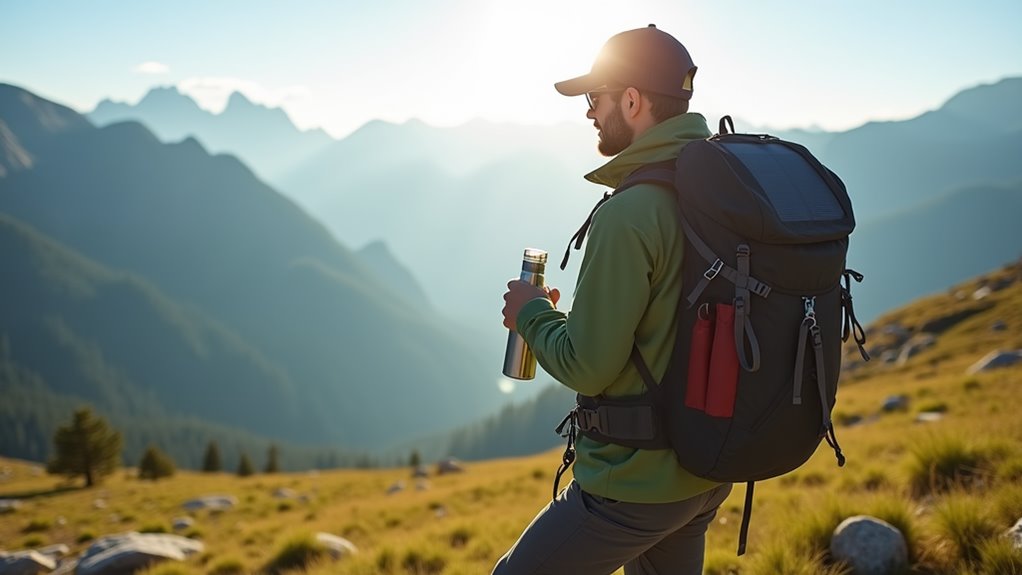
While traditional tourism often prioritizes convenience over conservation, sustainable tourism aims to minimize environmental impact while maximizing cultural and economic benefits for local communities.
When you travel sustainably, you'll make conscious choices about transportation, accommodations, and activities that protect the environment and support local economies.
You can practice sustainable tourism by choosing eco-certified hotels, using public transportation or biking, eating at locally-owned restaurants, and participating in activities that don't harm wildlife or ecosystems.
It's important to respect local customs, reduce your waste, and avoid single-use plastics.
Consider offsetting your carbon footprint by contributing to environmental projects, and always follow the principle of "leave no trace" wherever you go.
Choosing Eco-Friendly Accommodations
One of the most impactful choices you'll make in sustainable travel is selecting where to stay.
Look for accommodations that prioritize energy efficiency, waste reduction, and water conservation. Search for properties with renewable energy systems, recycling programs, and low-flow fixtures.
Consider locally-owned establishments that employ community members and source regional products.
Many eco-lodges and green hotels now carry certifications from recognized environmental organizations, making them easier to identify.
You'll want to check if they use sustainable building materials, natural cleaning products, and minimize single-use plastics.
Don't forget to examine their commitment to preserving local ecosystems and wildlife.
The best eco-friendly accommodations integrate seamlessly with their surroundings while actively contributing to environmental conservation and community development.
Green Transportation Options
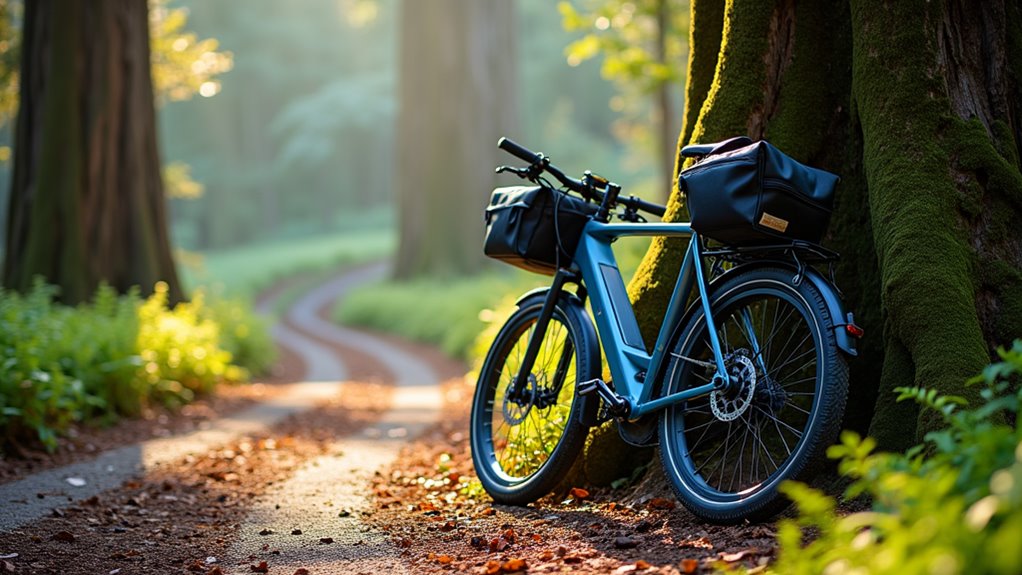
Since transportation often accounts for the largest carbon footprint of any trip, choosing eco-friendly ways to get around should be a top priority.
You'll find numerous options to minimize your environmental impact while exploring new destinations. Consider using public transit systems, which reduce per-person emissions significantly compared to private vehicles.
When possible, opt for trains over planes for long-distance travel, as rail transport typically produces lower emissions.
In cities, you can rent bicycles or electric scooters, or simply walk to experience local culture up close.
If you must rent a car, select hybrid or electric vehicles from companies that prioritize fuel efficiency.
For island destinations, choose sailing vessels or ferries instead of private speedboats.
These choices not only protect the environment but often provide more authentic travel experiences.
Supporting Local Communities
You'll make a real difference in local economies by shopping at traditional markets and purchasing directly from artisans who keep cultural traditions alive.
By joining community-based tourism projects, you're helping fund local schools, conservation efforts, and sustainable development initiatives.
Choose family-run guesthouses over chain hotels to ensure your tourism dollars benefit residents directly and create meaningful cultural exchanges.
Local Markets and Artisans
While exploring eco-friendly destinations, visiting local markets and supporting artisans offers a meaningful way to connect with indigenous cultures and boost community economies.
You'll find handcrafted items that tell stories of local traditions, from woven textiles to carved wooden sculptures and traditional jewelry.
When you purchase directly from artisans, you're ensuring they receive fair compensation for their work while preserving age-old crafting techniques.
Take time to learn about the materials they use, their creative processes, and the cultural significance behind each piece.
Many artisans use sustainable, locally-sourced materials and traditional methods that have minimal environmental impact.
You can also participate in workshops where skilled craftspeople demonstrate their techniques, allowing you to gain hands-on experience with traditional art forms.
Community-Based Tourism Projects
Community-based tourism projects offer one of the most direct ways to support local development while ensuring your travel dollars benefit the people who need them most.
You'll find these initiatives in various forms, from homestay programs in rural villages to guided tours led by indigenous communities.
When you participate in these projects, you're not just a passive observer – you become part of the community's story. You can help build schools, teach English, or work on conservation efforts.
Many programs also let you learn traditional crafts, cooking methods, and farming techniques directly from local experts.
Before booking, research projects thoroughly and look for those that demonstrate transparent financial practices and genuine community involvement.
The best programs maintain a balance between authentic cultural experiences and sustainable economic growth.
Stay in Family Guesthouses
The aroma of home-cooked meals and warm family hospitality awaits travelers who choose family guesthouses over traditional hotels.
You'll experience authentic local life while directly supporting resident families who've opened their homes to visitors.
These personal accommodations offer insights into daily routines, cultural traditions, and regional customs you won't find elsewhere.
During your stay, you'll often share meals with your hosts, learn family recipes, and discover local secrets about the area.
Your hosts can guide you to hidden gems and lesser-known attractions that most tourists miss.
You'll also develop meaningful connections that can last well beyond your visit.
Wildlife Conservation While Traveling

Modern wildlife conservation demands responsible tourism practices from everyone who ventures into natural habitats. You'll need to maintain safe distances from animals, never feed them, and stay on designated trails to protect their environment.
Remember that flash photography can distress wildlife, so disable your flash and use natural lighting.
Don't purchase souvenirs made from endangered species or their parts, as this encourages illegal wildlife trade. Instead, support local conservation efforts by visiting sanctuaries and parks that prioritize animal welfare.
When booking wildlife tours, choose operators who follow ethical guidelines and employ trained naturalists. You can also contribute by reporting any suspicious activities involving wildlife exploitation to local authorities.
Every thoughtful choice you make helps preserve these incredible creatures for future generations.
Minimizing Your Travel Footprint
While exploring new destinations brings excitement, responsible travelers must consider their environmental impact at every step. You can minimize your footprint by choosing eco-friendly transportation options like trains over planes when possible, and using public transit or bicycles at your destination.
Pack light to reduce fuel consumption during transport.
Select accommodations that prioritize sustainability through renewable energy, water conservation, and waste reduction programs. Bring reusable items like water bottles, shopping bags, and utensils to avoid single-use plastics.
Eat at local restaurants that source ingredients from nearby farms, and choose activities that don't harm natural resources.
Remember to offset your carbon emissions through verified programs that support renewable energy or reforestation projects. Small choices add up to meaningful environmental protection during your travels.
Sustainable Packing Essentials
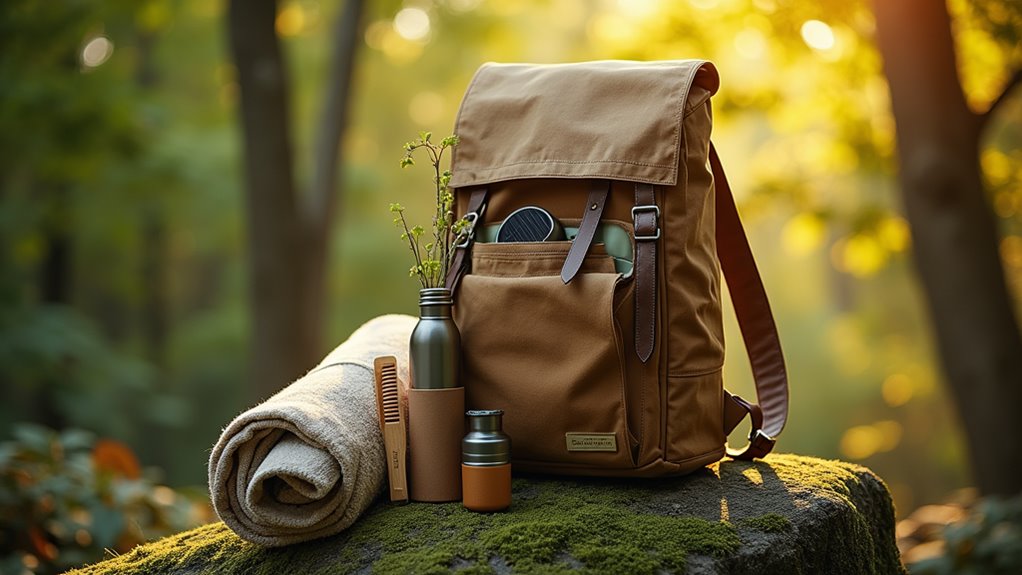
Smart packing choices form the foundation of eco-conscious travel.
You'll want to invest in a durable, sustainably-made backpack or suitcase that'll last for years. Pack versatile clothing items made from eco-friendly materials like organic cotton or recycled polyester, and limit yourself to what you'll actually wear.
Essential sustainable items include a reusable water bottle, cloth shopping bags, bamboo utensils, and a stainless steel straw.
Don't forget your reef-safe sunscreen, biodegradable soap, and a microfiber towel that dries quickly. Replace single-use toiletries with solid shampoo bars, natural deodorant, and washable makeup removers.
Consider bringing a portable solar charger for your devices and rechargeable batteries for cameras.
These thoughtful choices will minimize waste while maximizing your positive impact as you explore.
Responsible Wildlife Photography
If you're hoping to capture stunning wildlife photos, you'll need to master both safety and technique.
Keep a respectful distance from animals and use a telephoto lens to avoid disturbing their natural behaviors and habitats.
Learning low-light photography skills will let you shoot during dawn and dusk when wildlife is most active, without relying on disruptive flash photography.
Keep Safe Distances First
Although capturing stunning wildlife photos can be thrilling, maintaining a safe distance from animals should always be your top priority.
You'll need at least 25 feet between you and most wildlife, while larger or more dangerous animals require 100 feet or more. Never approach, follow, or attempt to get closer for a better shot.
Use your zoom lens instead of physically moving closer, and if an animal shows signs of distress – like raised fur, bared teeth, or repeated vocalizations – back away immediately.
Master Low-Light Photography
Since many animals are most active during dawn and dusk, you'll need to master low-light photography techniques to capture their natural behaviors.
Start by using a fast lens with a wide aperture (f/2.8 or wider) to let in more light. Increase your ISO setting, but be mindful of noise – modern cameras can handle higher ISOs better than older models.
Use a tripod to prevent camera shake, especially when shooting at slower shutter speeds. If you're photographing moving wildlife, try panning with the subject to maintain sharpness.
Consider shooting in RAW format, which gives you more flexibility to adjust exposure and reduce noise in post-processing.
Remember to turn off your flash – it can startle animals and produce unnatural-looking images. Instead, work with available light to create atmospheric, authentic wildlife photos.
Respect Natural Behaviors
While photographing wildlife can be thrilling, respecting an animal's natural behaviors is crucial for both their well-being and authentic images. Never bait, chase, or disturb animals to get your shot. Instead, observe from a safe distance using telephoto lenses and stay quiet and still.
You'll want to research your subject's habits beforehand to anticipate their movements and behaviors. Learn their feeding times, migration patterns, and preferred habitats. This knowledge helps you position yourself appropriately without interfering with their routines.
If an animal shows signs of stress – like stopping normal activities or displaying defensive postures – you're too close. Back away slowly and give them space.
Eco-Adventures Worth Exploring
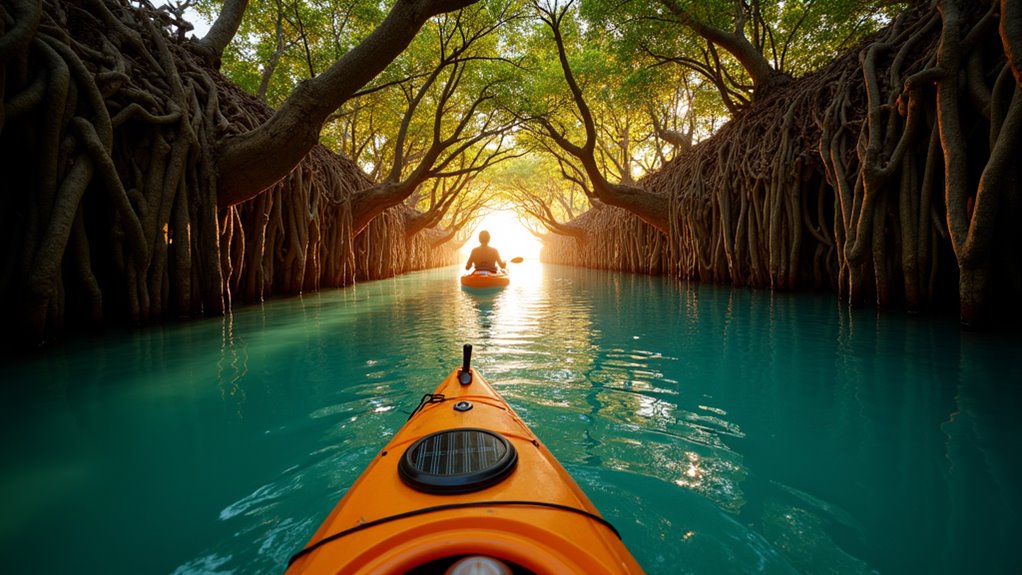
Whether you're an experienced traveler or new to adventure tourism, eco-adventures offer unforgettable ways to explore Earth's most remarkable places.
You'll discover ethical wildlife safaris in Tanzania, where you can witness the great migration while supporting conservation efforts.
Trek through Costa Rica's rainforests on certified eco-trails, staying at sustainable lodges that power themselves with renewable energy.
Consider kayaking Norway's fjords with marine biologists who study local ecosystems, or join a citizen science expedition in the Great Barrier Reef to monitor coral health.
For mountain enthusiasts, Nepal's community-based trekking programs provide authentic cultural experiences while ensuring tourism benefits local villages.
Each adventure combines environmental education with unforgettable experiences, allowing you to explore while actively contributing to conservation and sustainable tourism practices.
Plant-Based Travel Tips
As more eco-conscious travelers embrace plant-based diets, navigating
Frequently Asked Questions
How Do I Handle Language Barriers When Trying to Explain Eco-Friendly Preferences?
Learn key environmental phrases in the local language before you travel, and keep them saved on your phone.
You'll find that simple gestures like pointing, using pictures, or drawing can effectively communicate your eco-friendly needs.
Download translation apps that work offline, and carry a pocket-sized visual guide showing common sustainable items and practices.
When possible, connect with local eco-conscious communities through social media before your trip.
What Certifications Should I Look for When Booking Sustainable Adventure Tours?
Ever wondered how to spot truly sustainable tour operators from those just "greenwashing"?
Look for recognized certifications like GSTC (Global Sustainable Tourism Council), Rainforest Alliance, or EarthCheck when booking your adventures.
You'll also want to check for Travelife certification and B Corp status.
These badges ensure operators meet strict environmental standards, support local communities, and maintain ethical practices.
Don't forget regional certifications specific to your destination country.
Can I Combine Luxury Travel Experiences With Genuine Environmental Consciousness?
You can absolutely merge luxury with environmental responsibility.
Look for high-end eco-lodges that use renewable energy, practice water conservation, and support local communities. Choose upscale properties with green certifications like LEED or EarthCheck.
Book exclusive wildlife experiences that fund conservation efforts, and select luxury transportation providers who offset carbon emissions.
You'll find that conscious luxury often delivers more authentic, meaningful experiences.
How Do I Verify if Carbon Offset Programs Are Actually Making a Difference?
Picture a tiny sapling pushing through soil – that's your carbon offset at work.
To verify program effectiveness, you'll want to check for third-party certifications like Gold Standard or Verified Carbon Standard.
Look for detailed reports showing measurable impacts, transparent fund allocation, and long-term monitoring.
You can also research project locations directly and review independent audits from environmental organizations that track offset program results.
What Insurance Covers Eco-Adventure Activities in Remote, Sustainable Destinations?
You'll want to look for specialized adventure travel insurance that explicitly covers eco-tourism activities.
Companies like World Nomads and Allianz offer policies that include coverage for hiking, camping, and wildlife viewing in remote areas.
Make sure your policy includes emergency evacuation, trip cancellation, and medical coverage.
Don't forget to check if sustainable lodges and eco-friendly tour operators are within your policy's approved provider list.
Conclusion
Like a gentle footprint in the sand that's washed away by the tide, you'll leave minimal impact as you embrace eco-conscious travel. You're not just a tourist – you're a steward of our planet's treasures. By choosing sustainable options, supporting local communities, and treading lightly on nature's paths, you're weaving yourself into the fabric of responsible tourism. Let your wanderlust bloom while keeping our Earth's future in mind.
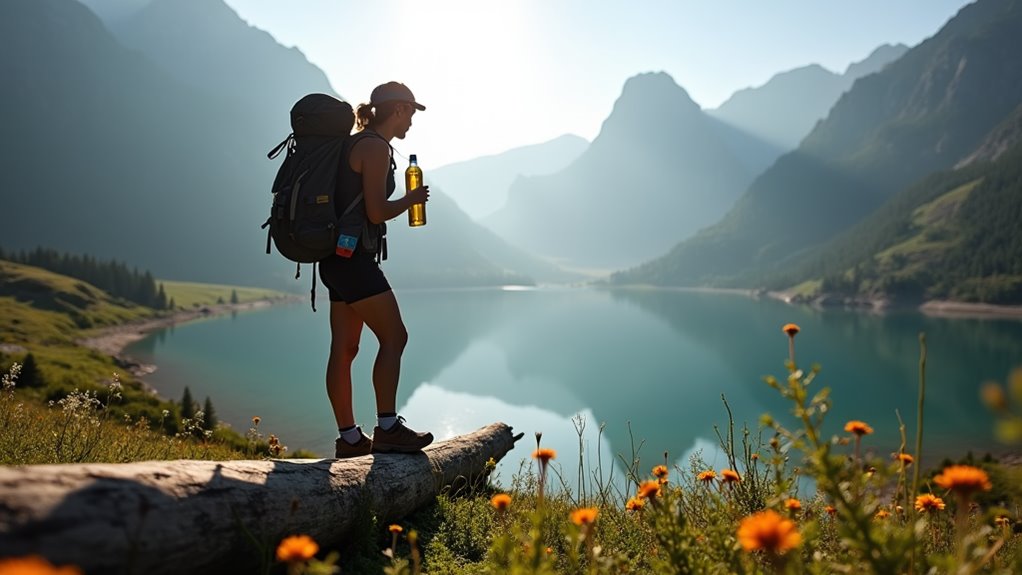
Leave a Reply